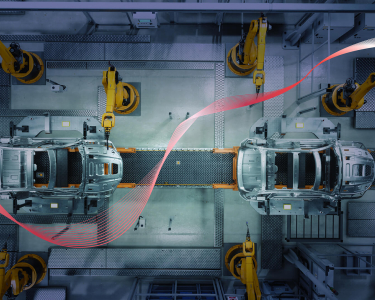Unified Networks: A Strategic Blueprint for Modern Business Transformation
As network environments evolve and become increasingly complex, enterprises acknowledge their need for unified network management. However, is it feasible to implement an end-to-end strategy? Organizations are rapidly deploying extensively distributed, modern application environments to enhance agility and improve their ability to serve customers better. This transition is propelled by digital transformation initiatives that impact individuals, processes, and technology. Indeed, ESG's "2022 Technology Spending Intentions Survey" reveals that over ninety percent (91%) of organizations are either commencing, currently engaged in, or have established advanced digital transformation initiatives.
Reimagining Network Architecture for Long-Term Growth
To remain competitive and resilient, enterprises must reimagine their network architecture. Unified Networks presents a strategic blueprint to address this imperative. Built on six foundational pillars — Intelligent Network Platforms, Digital Experience Assurance, Security Convergence, AI Operations, Data Center Modernization, and Sustainability —this approach aligns network infrastructure with long-term business goals, enabling organizations to scale operations, accelerate innovation, and ensure sustainable growth.
Intelligent Network Platforms- Enabling Seamless, Scalable Connectivity:
Enterprises navigate a complex digital landscape, balancing remote factories, global operations, and the need to comply with regional data protection and privacy regulations. Traditional network architecture simply doesn’t meet these demands. Intelligent Network Platforms provide a cohesive, software-defined framework that seamlessly connects on-premises and multi-cloud infrastructures. They enable centralized management, facilitate real-time analytics, and empower enterprises to implement consistent policies across diverse environments.
The emergence of Generative AI (GenAI) underscores the need for intelligent infrastructure even more. From predictive analytics to improved customer engagement, GenAI brings significant business value. Yet it only thrives when backed by strong data pipelines and high-performance computing. To fully leverage GenAI’s potential while managing risks such as data leakage or model manipulation, strategic alignment among CIOs, CTOs, and Chief Data Officers is essential.
Digital Experience Assurance- Ensuring Consistency Across the Digital Journey:
User expectations for uninterrupted and consistently available digital experiences have reached unprecedented heights. Performance inconsistencies, whether arising from infrastructural limitations, external networks provided by third parties, or the existence of management silos, can significantly jeopardize productivity and diminish customer satisfaction.
Digital Experience Assurance provides the tools and insights to ensure uninterrupted service delivery. End-to-end visibility, automated issue detection, and unified management consoles help IT teams proactively resolve performance bottlenecks before they impact users. This reduces downtime, enhances decision-making, and supports enterprise-wide digital transformation efforts.
Security Convergence- Protecting Distributed and Cloud-Centric Environments:
Cybersecurity becomes more complex and critical as enterprises expand across geographies and platforms. Managing networking and security separately is no longer a viable option. A converged approach, such as Secure Access Service Edge (SASE), integrates Software-Defined Wide Area Network (SD-WAN) capabilities with security services, including threat detection, encryption, and policy enforcement.
Adopting a zero-trust framework adds another layer of defense, requiring continuous verification of users and devices. Successful security convergence requires phased implementation, cross-functional collaboration, and unified policy management to minimize disruption and maintain business continuity.
AI Operations- Driving Proactive Network Autonomous Network Management:
Artificial intelligence is revolutionizing network and security operations. Traditional reactive models are giving way to AI-driven predictive and automated management. GenAI, while introducing new vulnerabilities—such as deepfakes and synthetic threats—also empowers defense mechanisms through pattern recognition, automated threat mitigation, and improved response times.
To capitalize on these advancements, organizations must deploy AI responsibly. This includes enforcing AI governance, securing training data, monitoring model integrity, and integrating AI-based detection systems into Security Operations Center (SOC) workflows to reduce incident resolution times.
Data Center Modernization- Supporting AI and High-Performance Workloads:
The rise of AI and advanced analytics necessitates a new breed of data centers—ones that are scalable, high-performing, and energy-efficient. Traditional setups fall short in meeting these demands. Modernization efforts should focus on high-bandwidth, low-latency connectivity, GPU-powered AI clusters, and sustainable innovations such as liquid cooling and renewable energy integration.
Sustainability- Embedding Environmental Responsibility into IT Strategy:
Sustainability is no longer optional—it is a business imperative. Enterprises are expected to demonstrate environmental responsibility while optimizing operational efficiency. This involves energy usage monitoring, infrastructure rationalization, and alignment with eco-conscious vendors.
Sustainable IT practices—such as adopting energy-efficient servers, virtualization, and green supply chains—can help reduce environmental impact and operating costs. Real-time analytics tools empower organizations to track and optimize their carbon footprint as part of a broader ESG strategy.
Unified Networks - From Network Silos to a Future-Ready Network
To address the complexities of hybrid work, multi-cloud environments, and AI-driven operations, Cisco and Tech Mahindra have co-developed an integrated suite of solutions that enable unified, intelligent, and secure network platforms. Cisco’s Meraki and Catalyst Center provide cloud-managed networking and AI-powered insights, while Tech Mahindra’s NetOps.ai and AQT platforms deliver automation, compliance, and performance optimization across hybrid environments. To ensure superior digital experiences, Cisco’s ThousandEyes and DNA Center provide real-time visibility and analytics, enabling proactive resolution of performance issues. These capabilities are unified through Tech Mahindra’s Service Assurance platform, providing IT teams with a single view to monitor and maintain service quality across both cloud and on-premises systems, thereby enhancing uptime and user satisfaction.
In security, Cisco’s SecureX, Umbrella, and SASE frameworks provide end-to-end protection across users, devices, and networks. These are augmented by Tech Mahindra’s Secure Digital Transformation Framework and AI Governance Model, which enable automated threat detection, policy enforcement, and compliance. These solutions form a robust foundation for secure, scalable, and sustainable digital transformation.
Overall, a Unified Networks paradigm to enterprise networks addresses challenges such as hybrid work, complex multi-cloud environments, and emerging threats. It provides intelligent automation, transparent visibility, and comprehensive security across the board. By taking an integrated approach, businesses can boost agility, comply with regulations, and achieve long-term growth through robust, high-performance networks that are future-ready.
Nikhil is a seasoned technology leader with experience spanning telecommunications, satellite, and cloud industries. Currently serving as Principal Consultant and Head of Marketing for Network Services at Tech Mahindra, he combines deep domain expertise with strategic vision to drive innovation across the network transformation landscape.Read More
Nikhil is a seasoned technology leader with experience spanning telecommunications, satellite, and cloud industries. Currently serving as Principal Consultant and Head of Marketing for Network Services at Tech Mahindra, he combines deep domain expertise with strategic vision to drive innovation across the network transformation landscape. Nikhil actively collaborates with leading industry bodies, such as the TM Forum, and engages with analysts to shape forward-looking strategies and co-create solutions that address the evolving challenges of the communications and digital services sectors.
Read Less







